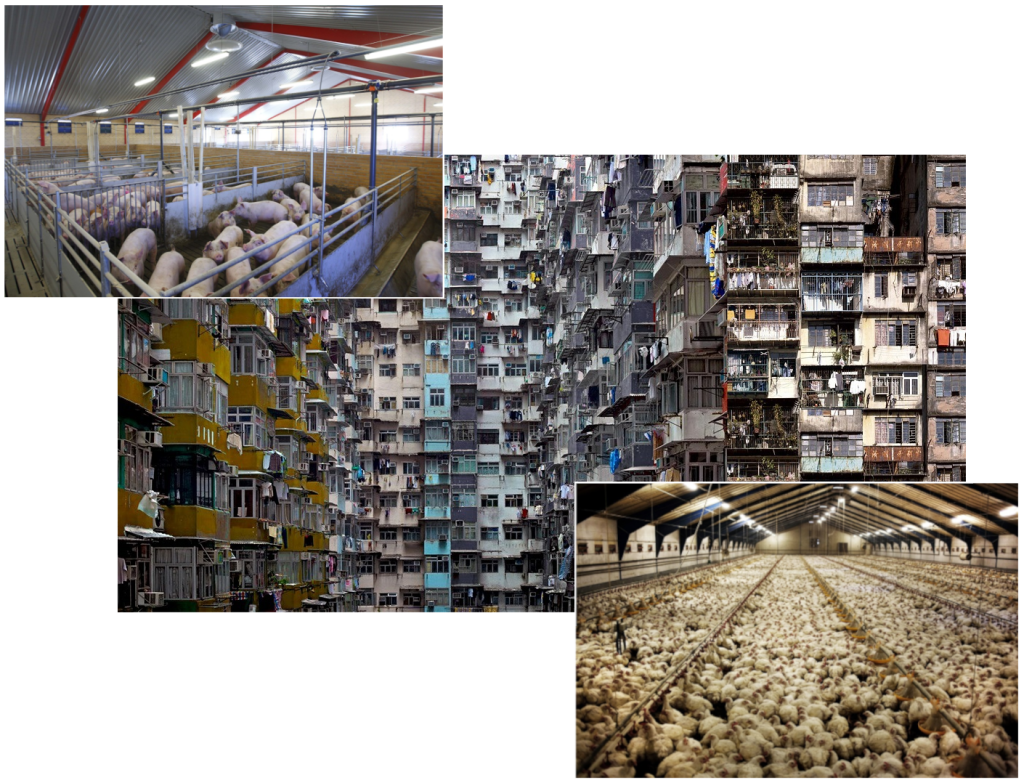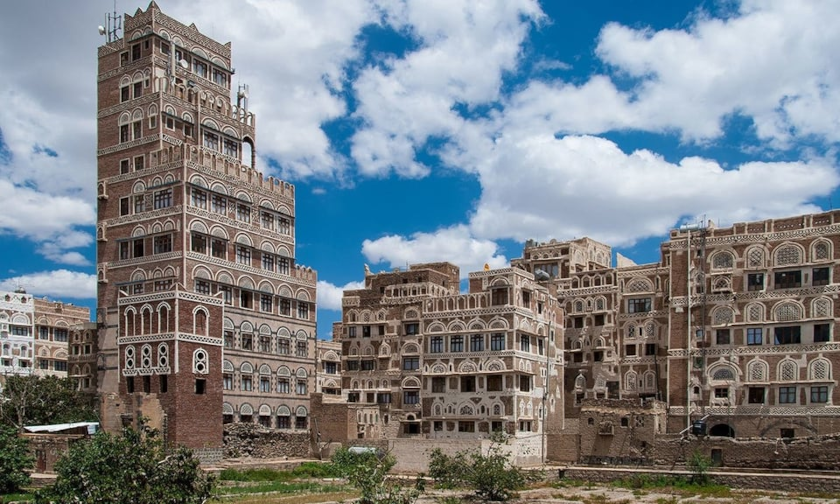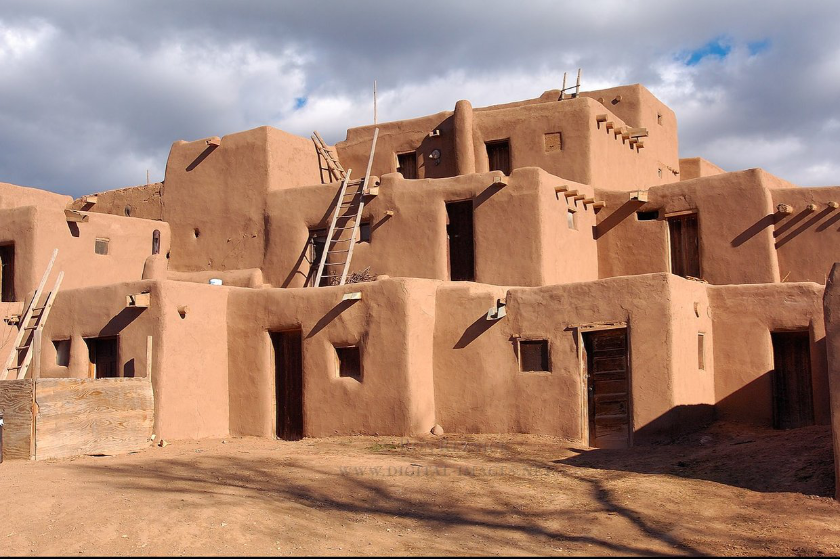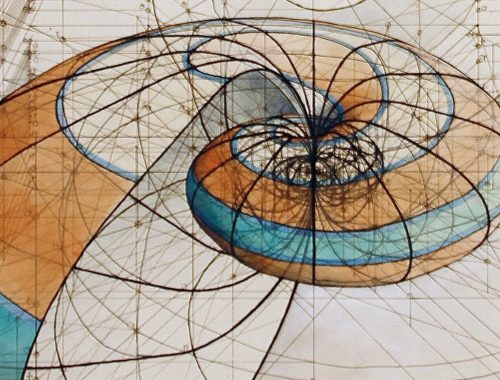We live in uglyness longing for beauty
One sometimes wonders how architects have been able to overlook that people – not just a little but to that extent! – prefer and search for places, squares and buildings that are beautiful and not the concrete modernist box environments that the architects have created. I mean, for example, visiting Ørestaden i Copenhagen (picture below) is not listed as a tourist attraction, even though there have been several world-famous architects in-over here. Have the architects totally forgotten that people always prefer beauty to ugliness?

All have a balcony with expensive furniture in exotic wood. Nobody uses them.
Well, there are lots of people around Islands Brygge and the Port of Copenhagen on a daily basis,
someone will object. Yes, but if they had erected these monstrous coffers in some dull locality where they could not lean on the attractive element: WATER, would there be people? And if you hadn’t placed a monstrous shopping center so that people were attracted to the week’s deals and fancy fashion clothes, would there be people? And if the location wasn’t a collection of the most attractive building plots starting 1-2 km from Town Hall Square of the main city of the country, would there be people?
If you gave people the choice between living in a beautiful 19th century building in the inner city and a butt-ugly concentration camp-like barracks in the sleeping belt – mind you at the same price, people would ALWAYS choose the beauty. But rich people also like beauty, and since they also find poor people ugly, they have priced beauty so high that the poor cannot afford anything but a wing of the local Auschwitz in the concrete belt.
Well, you don’t need beauty when you just have to work, eat, shit and sleep, do you?
So why make something out of the residential areas, when you just have to regenerate? The answer is already in the question with a sad realization that this is the existence that has been made possible for many-many people. Our life energy has been drained from us to the point where we can’t even resist the ugliness, because we just have to lie there gasping for breath when we’re not working to pay for the life that consists of gasping for air the weather.

It just so happens to be in Toronto.
Ugliness > boredom > aggression
There is a direct connection between ugliness in our surroundings, our living, work and transport environments and ugliness in our interior. Ugliness, boredom and violence are closely related. A graffiti-smeared concrete wall by a parking lot, in a factory district, along a dirty railroad track or on a wall in the rental box area is an unconscious form of protest against the boring-ugly. Those who have committed the graffiti hardly have a degree of self-awareness to understand why they actually did it – that is, apart from the fact that it is their membership card to the tribe, the bad company of similar types who are also bored and feel discarded waste with no future prospects. Their fuckness goes on ALL of it at once, because if they had been able to articulate themselves other than pissing against a wall, they would also have been able to improve their own lives and take up the fight against the ugliness instead of simply smearing ugly on top of ugly and thus confirming ugly. More ugly to confirm ugly. More aggression confirm aggression. We are not talking here about graffiti with actual artistic qualities, which actually exists, because it is only a fraction of the total spills.

Architects, not like the young graffitti makers, are actually able to articulate themselves verbally. Their vandalism is at a higher level, though. Many of them are very intellectual and articulate. The problem with them is that they lack empathy and compassion. They are heartless eggheads brainwashed by the box shaped ideals of modernism. It just has to function, they say, because that’s what functionalist-modernism taught them. They no longer understand man. Do they live in their own boxes, do they take their own medicine? They live at the very most in architect-designed luxury versions of their own boxes, which the proletarians can never afford to live in. But even their multi-million mansions contain the element of boredom. When you have seen it once and been shocked, your eyes look elsewhere.
Old cities have grown out of the landscape. The streets follow the given curves along the river, up the mountain, along the coast and the forest. Here we discover the parallel problem, because industrial society has succeeded in planning nature. When the landscape is leveled, it’s just a matter of drawing straight lines and slamming boxes for miles on end.
Beauty is a human need, not a luxury

This is exactly what functionalist modernism taught us.
There are studies of people’s priorities of the places they like to live in. We ignore here that the majority of people in and around big cities and in impoverished rural areas of the world have no other choice. In the US, a survey of 43,000 people in 26 cities found that beauty was the 3rd most satisfying feature of the places people preferred – ahead of safety, educational opportunities and basic services. Another study placed emotional attachment to beauty at the top of the list. An English study found that there was a direct correlation between the beauty of places and human health. So not only do you become violent, aggressive og depressed, you also get sick. A completion of misery would be, that you also become stupid.
So humans are not reducible to eat-shit-sleep-work. The need for beauty is at the top together with the need for food, water, clothes on the body and a roof over the head. Maslow’s pyramid of needs, go-fuck-yourself! Yes, if you’re about to perish, beauty is temporarily overridden, and unfortunately that’s how people around the world are forced to live: in a chronic state of martial law.
Architects who created the modernist ugliness that surrounds us today are full of excuses. Most of them are in the bad excuses category. Of course, we know a little about the conditions they themselves have had. We have some understanding, albeit to a limited extent. The developers have forced through speculative construction of poor quality because there was BIG money to be made here and now. It could pay off in the short term to build construction of poor quality. When the crap started falling apart after 25 years, they were over all mountains, had earned a fortune and had left a monumental legacy.

Is there really a difference between the cities of the living and the cities of the dead?
It tells a story about the builders’ view of people: that we are just a bunch of pigs and chickens who need a cage to sit and shit in before we are slaughtered and eaten. If the architect wanted to live as an architect, he had to bow his head to the client. Only the most famous and highly paid architects have been able to choose what they wanted to build. This is an explanation, not an excuse.

But who wants to stay there voluntarily anyway?
Walk-the-talk
It is significant that many architects, even among the most avant-garde, privately prefer to live in old, beautiful houses. If we are to show benevolent understanding, then it is perhaps an expression that there is a reason why they became architects after all – back then before they allowed themselves to be screwed up in architecture school, where the anti-aesthetics of modernism had taken hold. Although Frank Lloyd Wright lived in a house he had designed himself, the house was in the middle of a piece of fantastic nature. The avant-garde Rem Koolhaas has designed monstrous glass-concrete-aluminium complexes, but lives himself in an old Victorian building in London. The same modernist architects make fun of pastiche architecture, i.e. when you copy old architecture-still today. They are outraged, insulted, and they are contested, because they know that it is an expression of popular dislike of their venture.

so we can really see your greasy grin?
How many millions did they pay you to make that piece of brutal shit?
There has been a dehumanization and blunting of people over a long period of time. In antiquity, beauty was thought of as part of the state of things. Something was beautiful in itself, it was a quality outside the human mind, it was objectively beautiful. In the Age of Enlightenment in the 18th century, a shift began where beauty was perceived as subjective. What was beautiful for some was ugly for others – thought the philosophers who paved the way for a change in people in general. Immanuel Kant’s contemporaries among non-philosophers, i.e. people as such, would in practice have been in vertical disagreement. They were not just isolated subjects, they had a common sense of beauty. It is interesting that the very word subjective at its core already tells that there is something obscure and contradictory going on. A subject is also a term of abuse for an inferior, despicable person. Sub-jacio in Latin means subjugated, oppressed, you belong to the low caste. People perceive the term differently as: I have my own opinion, I prefer something, I take an independent position, you see it from my subjective angle.

Taste
Much has been written about the concept of taste in philosophy. While there will always be certain deviations in what people prefer, i.e. in the judgment of taste that people exercise when they prefer something and find something beautiful or ugly, attractive or repulsive. It is nevertheless remarkable that the taste for beauty precisely is not just subjective but inter-subjective – we hardly dare to use the word objective anymore. In other words, people know well what is beautiful, since they collectively prefer certain places over others. Again, we ignore the brain dead, who are marinated in their inner ugliness, so that they actually prefer ugly places, just as the drug addicts in the subway stations get red bumps and shivers when they play Vivaldi over the speakers. If death metal was played, they would be completely calm.

However, less can do it. They, on the other hand, have tourists who walk and stare into the windows.
There is something in our nature that prefers beauty, and here we approach an understanding. The beautiful is the natural. We are not subjects in our nature, we are part of the Great Objectivity called Nature. We are attracted by nature’s proportions, frequencies – or ratios if you will, but this is a trick of the measuring brain, which likes to quantize quality and likes to put nature into manegeable formulas. Even mathematicians must admit that it is the odd numbers that are the most interesting, pi, phi, the golden ratio. And certainly if not that is what we find built into the architecture of ancient times.

Architects believe with their modernist brains that taste can be learned. They have learned themselves and developed a taste for … boxes. There’s a term for that: design disconnect. They have trained their brains to perceive something as beautiful that everyone else thinks is ugly. The problem is subsequently that they have been in a position where they have been allowed – and sometimes told = forced, that much we have understood – to build the world that we all have to live in. It is their decoupled ideals of form pounding into people’s consciousness 24/7/365, every hour, every day, every week, every year. Their modernist decoupling has been allowed or told to form our collective perception of the world. We actually become stupid by being sorrounded by ugly stupidity.
You become what you eat, they say. And if what you ‘eat’ tastes square, then you become a square.

The business and ruling class are filthy rich and have the worst taste.
And yes we do get the message.
They didn’t even even want beauty, but to signal: look how big my dick is!
In 1987, the psychologist David Halpern did a study of a mixed group of students. They were shown pictures of people and buildings. Some of the students were architecture students, others were not, and the survey focused on which pictorial expressions they preferred. The architecture students’ preferences were the buildings that everyone else did NOT prefer – the stunt with human faces was just a distraction for the architecture student so they didn’t smell the fuse: they were the object of the study. The further the architecture students were in their study, the more they exhibited design disconnect.

Man = nature = man
There is something going on here since we need to talk about disconnection.
We are human, and when we are subjected to inhumanity, we react. It is deeply encoded in our brains. We have a brain and a nervous system = an awareness of ourselves and the world that is formed in interaction with nature. Nature is both a potential threat and refuge. We have learned to prefer and seek nature’s refuges. We have always, before we lived in houses, sought shelter, security and fertility. You can take people out of the Stone Age, but you can’t take the Stone Age out of people (Nigel Nicholson). We all have a completely basic nervous system based on a condition that has formed us as human beings.

They were abandoned because of hard times + bad governance. They are located in the most beautiful places and are now in decay. A new popular movement is forming to preserve and restore them.
You can buy houses here for down to 1 euro, but to restore it may be both expensive or extremely labour demanding. The problem can also be finding the owner, because no house is without an owner.
Maybe they’ve moved far away by then.
How are beauty and nature related? Beauty is nature’s way of signaling from a distance. We get happy looking at something, as a signal that it is good for us. All things and phenomena we find beautiful have certain properties in common:
- it has a shape we like
- it is fit for purpose
- it is well made

We decode nature’s signals via what brain research calls the amygdala, the thalamus and the visual cortex – that’s just their clinical geek terminology for locations in the brain that show activity when we display an emotional response to our surroundings. This is why we react positively to organically rounded shapes and negatively to sharp edges. 90-degree structures are found nowhere in nature. They create stress and fear-fight-flight-convulsion reactions. Sharp edges are the teeth of predators, thorns on a bush or rock edges that can tear us to pieces.
Modern monitoring technology such as eye-tracking equipment is used to investigate where we place our preferred attention. It turns out – not surprisingly – that our eyes prefer structures that resemble the nature we come from. We are with one descriptive word: BIOFILE. We seek and love LIFE with our attention. We are repulsed by DEATH or the threat of death. We are both hard- and soft-coded in our preferences.
The structure of life
What are the structures of life?
- fractals – large and small shapes are the same, life forms are scalable
- symmetry – living things have symmetry as a basic form
- ornaments – we are attracted to ornaments and repelled by empty surfaces
We aim for a balance between order and complexity.
Pure order creates boredom, pure complexity creates chaos.
A modernist facade is pure, abstract order, an absence of ornament that repels us.
Everything on a tree is fractal, modified symmetrical and ornamented. The crown of the tree is an upscaling of the branch, there is an upscaling of the twig, there is an upscaling of the leaf. The tree trunk is never smooth but contains furrows, wrinkles, bark-likeness, structure.

Curves and spirals are present in nature and classical architecture.
The curve is the classic vault found in almost all windows, portals and ceiling-roof constructions.
Classical architecture has always sought to connect with nature.
Parks and avenues are an integral part of the urban environments of the past.
Even architects who know very well that their architecture is a violation of nature’s principles use planting to compensate and hide it.
Hence the name architect’s comfort. You’ve just built a piece of ugly shit with built-in contempt for humanity, and now you need an outer wall of ivy to cover up the horror.
Modernist architecture is like any other fashion. Modernism becomes unfashionable quite quickly.

Modernism versus traditionalism
This is a topic in itself. The main problem with modernism is that it denies and despises traditionalism. When we deny tradition, we deny the very lifeblood of our culture. It is already in the word: modern.
We indulge in a fashion. Fashions change, they renew themselves from the outside, they are highly unstable. Traditions do not change, they renew themselves from within, they are stable-dynamic.
Modernism celebrates progress regardless of the direction of the step forward taken.
Modernism throws away knowledge and forces a new generation to start from scratch. It is static but claims to be dynamic. What if the step goes over the edge or directly to hell? Well, it is progressive they say. Tradition passes knowledge between generations, it is dynamic, although being accused of static.
Traditionalism takes the conditions into account and adapts. In a temperate climate, houses are built accordingly. A culture lives close to river, lake and forest. Therefore, they build houses of wood or burnt clay with sloping roofs of straw from the lake shore to withstand even enormous amounts of rain. They have large windows to let in more light. Another culture lives near a desert. Therefore, they build houses of sand and clay and paint them white to keep the heat out with flat roofs, since it rarely rains, and small windows to keep out too much sunlight and the heat. Both cultures do not have access to endless resources, so they do what works and stop doing what doesn’t.

Traditionalism has NOTHING to do with lifeless nostalgia and rigid conservatism but EVERYTHING to do with sound practice in relation to local climate and regional conditions. In addition, traditionalism, with its built-in need for beauty, has managed to extract the most beautiful from the practical.
Killing tradition is the loss of knowledge and craftsmanship. Tradition is the preservation of the same.
Modernism is disrespect, tradition is respect.
Modernism is a realization of abstraction. Traditionalism is a realization of the tangible created over many generations.
Modernism strives for historylessness, traditionalism has incorporated all kinds of human history.

whether there is also a kingdom of heaven hidden behind it.
Read: Beauty in exile
Read: Build a house of mud
Read: The City of the Dead
Read: The human house
Read: Get out of the city
Read: Buzzwords and permaculture
Watch: How bad architecture wrecked cities




